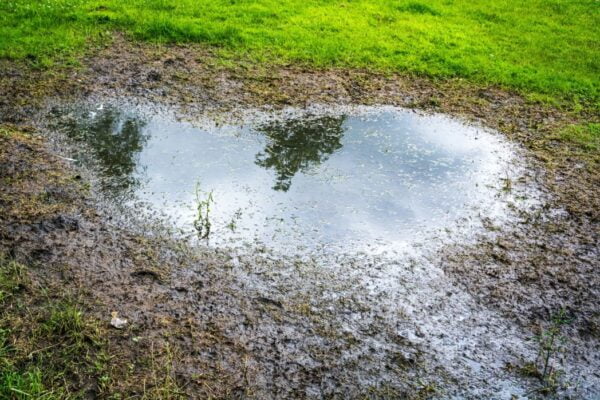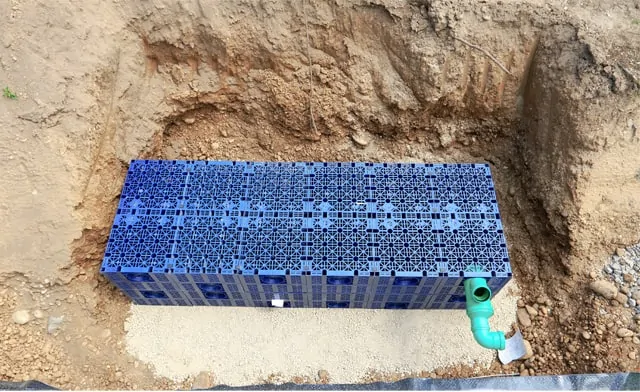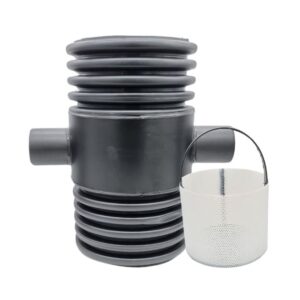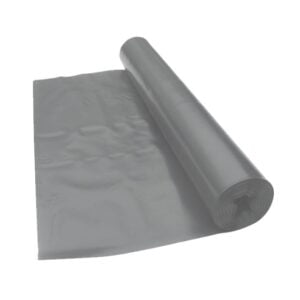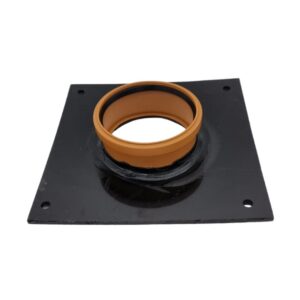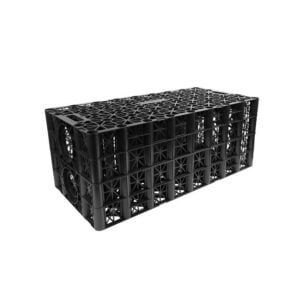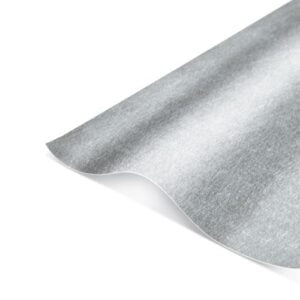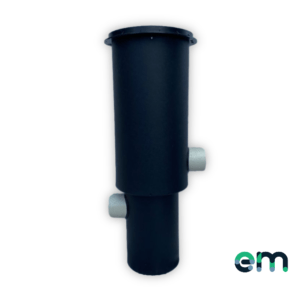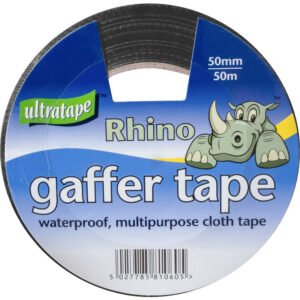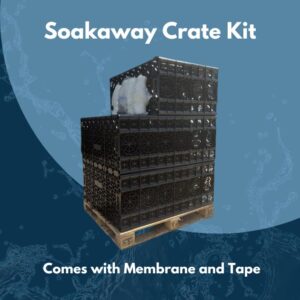No products in the basket.
Blog
Avoiding a Blocked Soakaway System
Soakaway systems are a commonly relied on solution for dealing with standing surface water, as they enable you to channel rainwater from your drainage system into buried soakaway crates which then slowly and steadily disperse it into the earth. This efficient method for dealing with surface water run-off offers a viable alternative to redirecting it to storm drains or a natural water source, and once they have been properly installed, soakaways tend to require very little maintenance.
In the event that you do experience issues with a soakaway system, a blockage is more than likely to be the root cause, so in this guide we give some tips on what you can do to avoid the problem and how you can carry out repairs where needed.
How to Identify a Blockage
There are two main signs that indicate there are soakaway problems. The first is usually waterlogging returning to the area that was previous cured or there is a return of flooding or standing water across the garden, sports field or other landscaped area. The second is noticeable dips in the ground which occur when the soil has become so compacted that it can no longer be penetrated by water. In both cases, the problem needs to be rectified as soon as possible to avoid further water build-up and damage to gardens, landscaped areas and the building foundations of any nearby property.
Common Causes of Blockages
The simplicity of a soakaway system means that a blockage can usually only be caused by one of three things, which makes it much easier to identify and address what is causing the drainage problems. These potential causes include compacted soil which can stem from external pressure on the ground or a prolonged period of unusually dry weather – and the subsequently hard and dry mud means that water is unable to penetrate the ground which eventually leads to waterlogging.
Another likely culprit is poor protection from silt and sediment, where either an insufficient membrane has been used to protect the plastic soakaway crates, or the geotextile membrane has been damaged. Alternatively, soil and other types of debris such as stones, leaves or rubble may be finding a way into pipework and blocking the flow of water, which is where silt traps or catch pits may help.
The third common potential reason is a collapsed drain, and unfortunately this can be a much more time-consuming and costly issue to rectify. You can read more about dealing with drain collapses in our recent blog post. If any of the underground drainage pipes that feed into the soakaway system have been seriously damaged due to excessive external pressure, poor maintenance or inadequate installation, they may collapse in on themselves causing rapid leaks and it is likely that the whole clogged system will need to be replaced.
How to Repair Blocked Soakaways
If upon inspection you find that there is an issue then there are two main courses of action that you can take to unblock a soakaway. If you believe that the non-woven geotextile membrane has a hole or is damaged, or a 110mm drainage pipe has collapsed, or if you have concluded that the soakaway crates that have been used are the incorrect size and volume for the amount of rain water being directed to them via the underground drainage systems, then unfortunately in these circumstances the best option may be to dig up the entire soakaway system – including all pipes and crates – and install a full replacement. Alternatively, if you suspect that the blockage has been caused by a buildup of sediment, you can dig up the system and clear out the build up where it has occurred, while also inspecting the drainage system with the aim of locating the problem and repairing or replacing the specific section that is at fault. Remember you can avoid a slow build up of grit and silt within the system by installing a silt trap and maintaining it correctly.
How to Prevent a Soakaway Blockage
As with any type of issue, prevention is always better than cure and fortunately there are a number of things you can do to proactively avoid a blocked soak away. First and foremost, it is important that a soakaway installation is always carried out correctly by a team with the right experience and equipment. You also need to ensure that the soakaway crates used as part of the system are fit for purpose (whether it is a commercial or residential application) and that they offer sufficient capacity for the volume of rainwater coming from the drainage system that they are connected to. Wrapping crates with a high quality non-woven geotextile membrane is also key, as it will remove the likelihood of silt, dirt and other types of debris from entering the soakaway. For improved efficiency, you can choose to use a silt trap or a catch-pit, which is an empty chamber that is built into a drainage system, that can collect debris and be regularly emptied and maintained.
We always advise than you should carry out necessary percolation tests on the land to properly assess the soil and how well it drains. The results of a percolation test can allow you to accurately calculate the size of the soakaway crates needed for the job by determining the rate of water absorption into the ground, which will help you to avoid water logging problems in the future.
High Quality Kits
At EasyMerchant we stock Soakaway Crate Kits that include crates, non-woven geotextile, waterproof tape and cable ties which when purchased together can help you to save money and time on site. We also offer separate drainage crates, drainage pipes, silt traps, and non-woven geotextile membrane in various lengths. As we’re committed to only selling products that have been expertly manufactured by leading brands, you can be assured of the quality and durability of our range which can help to ensure that your soakaway solution functions as intended for many years to come.
If you’re looking for further advice on how to build a soak away system, how to calculate the size of your soakaway or for a guide on silt traps then follow the links to read our blog posts.
Shop Soakaway Crates:
(28)
From £228.03 Excl. VAT

